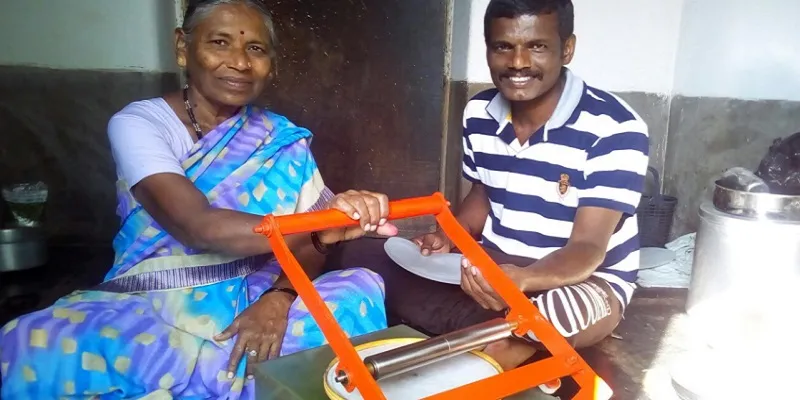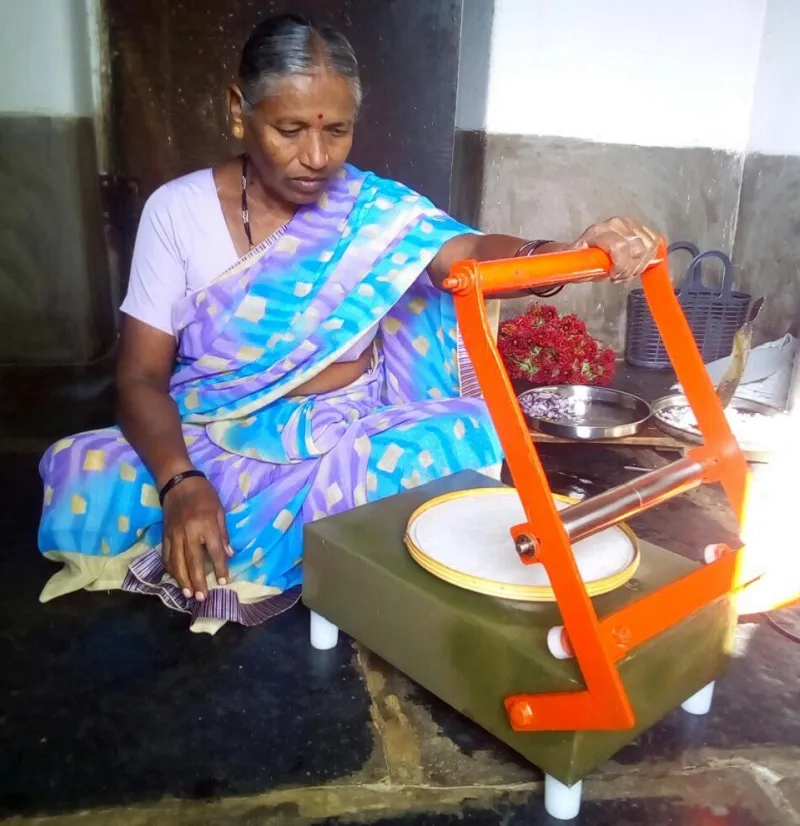To help his mother, this rural innovator built a roti maker that makes 180 rotis in an hour
Hailing from a small village in Karnataka, Bommai N has also invented a sustainable coal stove that can cut down up to 80 percent of the pollution produced by traditional cooking methods.

Bommai N (41) has always had an eye for innovation. From first trying to innovate new machines in his cycle shop to now having his own licensed workshop, this rural innovator from Bukkasandra village in Karnataka has come a long way.
Due to financial constraints in the family, I couldn’t study much. I dropped out after a job-oriented course (JOC) in sericulture. However, I have persistently been motivated to innovate on products that reduce rural household labour, says Bommai.
Irked by the manual effort it takes for rural women to dole out large number of rotis, Bommai decided to innovate a simple machine that makes the whole process easier.
I’m a huge roti lover and it hurt me every time to watch my mother painstakingly roll chapatis and fry them. She used to spread newspapers to prevent the wheat flour from spilling out. Watching this elaborate process made me think and innovate something new, says Bommai.

Further explaining the process on which his new innovation works, he adds: “In the traditional method, you rotate a rolling pin over a smooth and stable wooden surface to flatten the chapati/roti dough. Taking inspiration from this age-old method, I designed a mechanism where the rolling pin remains stable, and inserted plate like structures rotate and roll out the roti instead”.
Bommai’s roti maker is designed to work on both solar power and alternating current (AC). Costing 15 thousand, this portable, easy to operate machine weighs just 6 kg and is the size of a regular induction stove. Working on a simple lever mechanism, this roti maker can flatten up to 180 chapatis/rotis in an hour which can directly go to the frying pan.
When asked how his innovation has benefited women like his mother, Bommai quips,
My mother is very happy with my roti maker and does not refuse to cook for me plenty of rotis any more.

“Many other women from the village have also used and appreciated the roti maker since it reduces their effort and saves cooking time,” he adds.
Though Bommai wishes to take his innovation to a large audience, financial constraints are a hindrance.
Under the ‘Make in India’ campaign, I would love to improvise on this roti maker and market it better to help all rural women and farmer families. But only if I get appropriate monetary support, says Bommai.
The roti maker is not the only innovation that Bommai has to his credit. This talented rural innovator and entrepreneur is also known to have created a sustainable coal stove that he claims reduces almost 80 percent pollution in comparison to traditional firewood stoves.

“To heat water, my mother constantly struggled with the old-style stove that often chokes the chimney and fills the house with smoke and soot. To help this situation, I invented a comparatively eco-friendly stove that produces only 20 percent emission of smoke. Fitted with an air filter and silicon metal piece, this stove works more efficiently than the traditional one,” explains Bommai.
Bommai’s coal stove, which costs Rs 2,600, is already popular with local village eateries for he claims to have sold 50 pieces of the same. However, Bommai also plans to upgrade his existing model of the stove with improvisations like fitting a cooling fan, etc.
Ask him what keep him on his toes to keep innovating and he says:
The familial circumstances, difficulties and drawbacks in the working of a rural household inspire me to come up with new innovations that help village folk.







